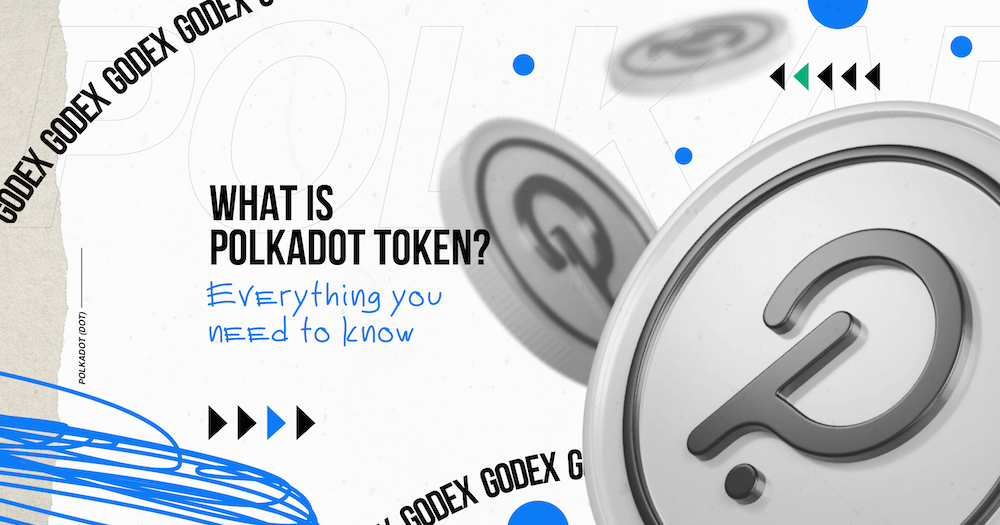Table of Contents
What is Polkadot? (DOT)
Over the 10 years of the existence of cryptocurrencies, many blockchains have appeared in the world with completely different purposes. Getting them to work together is almost an overwhelming task. But the startup Polkadot promises to cope with that. What does polka dot mean? The official website says that Polkadot is a “multi-chain technology”. In simple terms, it is a network that connects blockchains. It creates a space where data from different blockchains can be processed and exchanged quickly and securely. The important point is no system-wide updates or hard forks. This is the goal of this project.
Why is it important?
What is Polkadot cryptocurrency? Polkadot is a multi-platform aimed at uniting all existing blockchains into a single global ecosystem and eliminating the problems of scalability, governance and interoperability for good. Independent distributed ledgers and even networks built on a different architecture could become one of Polkadot’s para chains.
One of the main advantages of Polkadot is the fact that it is a new platform for building an entire ecosystem of projects. The technology supporting this crypto asset bridges the gap between blockchains and allows them to communicate and transfer information. The coin is still very young, which makes it prone to little volatility.
How does Polkadot work?
Let’s look at the main elements of the Polkadot ecosystem.
The basic element of the Polkadot architecture is the so-called Relay Chain, which provides system-wide security and transaction recording. The second level is parachains, or independent blockchains. Their developers set the rules for the operation of the parachain: the consensus algorithm, block generation time, staking, commissions, and so on. Accordingly, each parachain can have its own cryptocurrency. Transactions are collected into blocks at the parachain level, and the result is passed to the Relay Chain for final validation.
So far, the maximum number of parachains is 100, although each of them can run many separate decentralized applications. Parachain slots are distributed through auctions, with a maximum parachain lease term of two years. All parachains can access each other’s smart contracts and freely send any kind of data, including tokens.
In order to allow parachains to interact with external blockchains such as Ethereum and EOS, so-called cross-chain bridges are being created. A detailed analysis of the mechanism of their functioning goes far beyond the scope of this article; Let’s just say that each bridge has its own validators, i.e. participants who register and confirm requests for transactions between blockchains.
If, for example, a user wants to send Bitcoins to the Polkadot parachain, then the BTC will be frozen on a smart contract, and the bridge will release the so-called “wrapped BTC” powered by Polkadot. When the user decides to take the Bitcoins back, he will need to send the “wrapped” version back to the bridge contract, where they will be burned and the original BTC released.
DOT blockchain uses the Proof-of-Stake consensus mechanism. The actions listed in the table are available to regular users of this cryptocurrency.
A user can perform one of 4 roles that are necessary for the operation of the Polka dot networking: a validator, a collator, a nominator or a “fisherman”.
The purpose of validators is to validate a block. They also entrust the development of new blocks to the nominators. Validators are similar in their functions to PoW-powered blockchain mining pools.
Nominators play a role that is similar to miners in PoW networks.
Collators help you create correct, validated blocks. They store full versions of the nodes for the main blockchain and parachains. They receive commissions in the form of DOT coins.
Fishermen act independently and they are rewarded for proving the illegal actions of other parties involved in maintaining the stability of the network.
Crypto holders can influence decision making regarding updates and changes in the operation of the online platform, removal or modification of parachains, protocol.
What Makes Polkadot Different Than Ethereum?
Structurally, Polkadot is significantly different from Ethereum being focused on scalability. Launching your own project in Polkadot should have become easier, faster and cheaper than on the Ethereum blockchain. Obviously, the Polkadot team has managed to achieve technical advantages, in addition, transactions on this network are much cheaper than on Ethereum. But it will be more difficult for the project to compete with Ethereum 2.0. The updated version of ETH 2.0 will have features comparable to those ones found in Polkadot. Therefore, in ETH 2.0, the division of a single network into separate segments that fulfill different goals will appear. In both networks, the main blockchain will confirm transactions and provide its resources for additional networks. ETH developers are also working to make interoperable transactions between Ethereum 2.0 and other blockchains. Despite direct competition, structural differences it is suggested that the coexistence and prosperity of both blockchains on par with each other is possible.
What problems does Polkadot solve?
What is Polkadot coin targeting? It is addressing the key challenges preventing blockchain technology from becoming a full-blown practical application, namely:
Scalability: The so-called first-generation blockchains cannot handle a huge number of transactions in the supposed decentralized world of the future.
Isolation: Blockchains remain discrete and independent, lacking two-way communication and interoperability.
Does Polkadot have a cryptocurrency?
A review of the DOT cryptocurrency shows that it can be applied for:
- Conducting fast transactions between users.
- Connecting the new blockchain to the ecosystem.
- Payment for goods. More and more online services accept transactions in tokens.
What is Polkadot used for? DOT cryptocurrency is used not only for transactions between users and payments for goods and services. It also acts as an access token on the blockchain platform of the same name. It performs 3 functions:
- Network management.
- Staking. Network security is maintained through game theory: token holders who follow the rules are rewarded and violators are fined.
- Bonding.
There are 978,279,587 DOT in circulation. The total emission is 1,094,003,744 DOT. If necessary, it is possible to issue additional Polkadot tokens.
Where and how to buy Polkadot?
It will not be difficult to buy Polkadot cryptocurrency for fiat money or other digital coins, because it is supported by the largest cryptocurrency exchanges. Over the past few years, Godex crypto exchange service has acquired the status of a serious and reliable tool for buying, selling, and exchanging coins, where in a couple of clicks you will find out what is the price of Polkadot. The exchange service allows not only a profitable exchange, but also the opportunity to earn money by attracting people to the site and participating in a profitable affiliate program. Godex is distinguished by the fast processing of the applications and the speedy technical support service. Godex guarantees complete anonymity of the exchanges and the absence of registration.
What are Polkadot’s aims?
Polkadot aims to solve the problems that the Ethereum network faced at a certain stage of development: scalability and the impossibility of interoperability of various blockchains with each other. Polkadot guarantees the security of all blockchains on the network and that any interactions between them are carried out correctly and in a decentralized manner.
Get
Start a Cryptocurrency exchange. Try our crypto exchange platform
Conclusion
The project developers set global goals and even if they fail, the idea will sooner or later be picked up by another team. However, at this stage, Polkadot has enough competitors. The technical advantages need to be proven in practice, otherwise, there is no major payment network to become a parachain. As for investments, the DOT coin is promising for trading on short and medium positions, but the feasibility of long-term deposits is still in question. Do not forget about the need to diversify your investment portfolio.
Disclaimer: Please keep in mind that the content of this article is not financial or investing advice. The information provided is the author’s opinion only and should not be considered as direct recommendations for trading or investment. Any article reader or website visitor should consider multiple viewpoints and become familiar with all local regulations before cryptocurrency investment. We do not make any warranties about reliability and accuracy of this information.
 Peter Moore
Peter Moore 
Read more
EOS is definitely on the list of the strongest and most stable projects in the crypto world. Despite the fact that the currency entered the market less than 3 years ago, it consistently occupies one of the top 10 places in the rating for project capitalization. it is often called the “main competitor of Ethereum”. […]
Ripple (XRP) price has been widely discussed by the cryptocurrency community since it has gained public interest in 2017, even though it was founded by Chris Larsen and Jed McCaleb years before. The platform offers innovative blockchain solutions for the banking sector and has the potential to disrupt the whole finance industry. In recent years, […]
In this article we will talk about Ripple (XRP) and its price prediction. What is Ripple (XRP) Ripple is a San Francisco-based startup that was launched in 2012 by Ripple Labs as a global network both for cross-currency and gross payments. Ripple history began in 2004 with the discussions around the digital coin in the […]
You may well think that an article dedicated to a Tether price prediction or the Tether price in general is a little bit strange — it is a stablecoin after all. However, the price of Tether does fluctuate significantly, although it is nowhere near as volatile as non-stablecoin cryptos. This means that staying up to […]
In the article we share our vision at Zcash cryptocurrency main features and add several price predictions. As cryptocurrencies gain global acceptance and decentralisation slowly enters our lives, privacy becomes the main concern when talking about blockchain adoption. It is no secret that distributed ledger is by far the most secure and transparent technology ever […]
Chiliz coin (CHZ) offers a compelling opportunity for traders interested in the intersection of blockchain technology and sports. By enabling fans to influence team decisions through the Socios app, Chiliz directly monetizes fan engagement and connects with major sports teams like Juventus and Paris Saint-Germain. These partnerships not only enhance the platform’s visibility but also […]